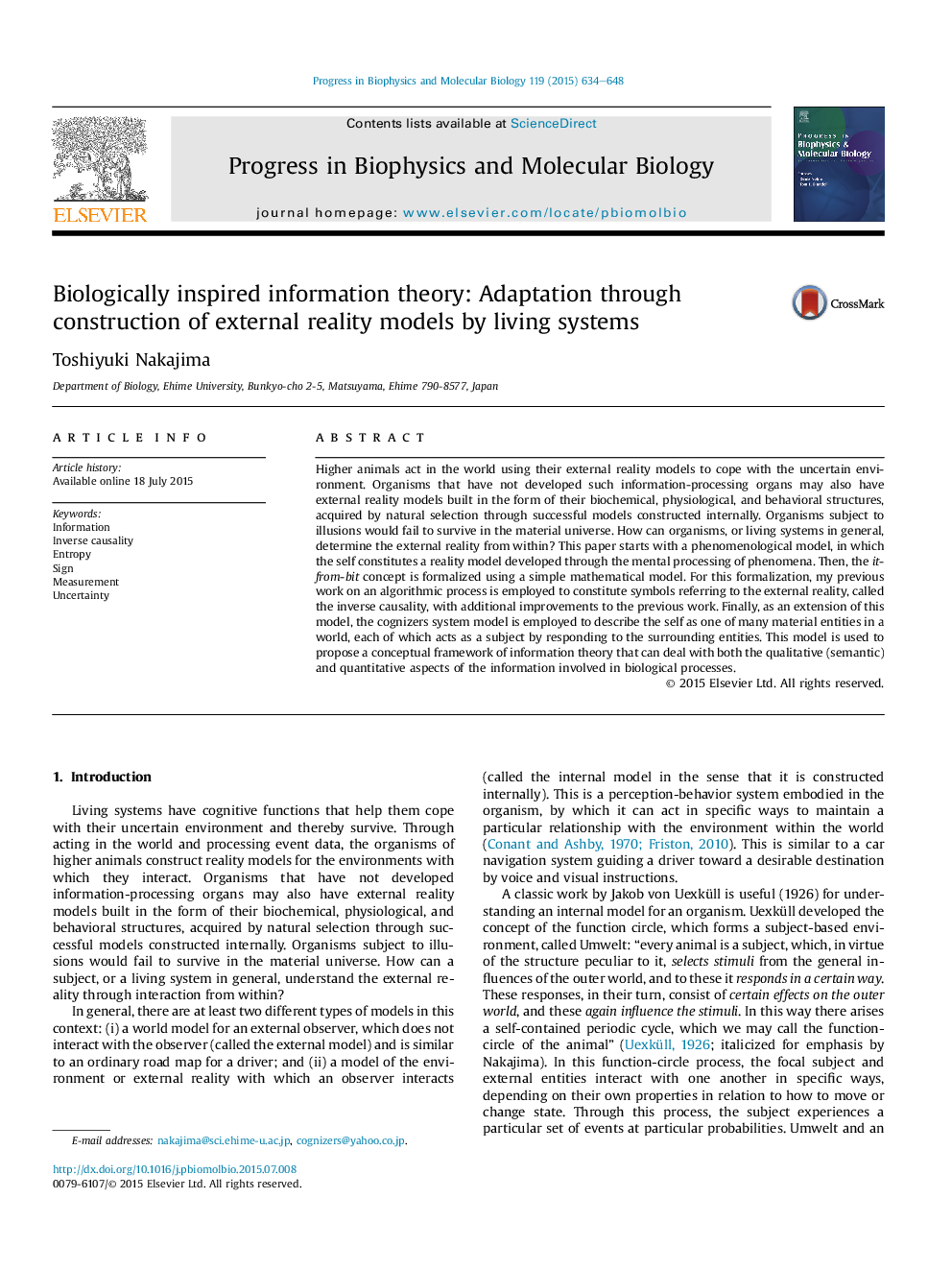| کد مقاله | کد نشریه | سال انتشار | مقاله انگلیسی | نسخه تمام متن |
|---|---|---|---|---|
| 2070114 | 1078463 | 2015 | 15 صفحه PDF | دانلود رایگان |
Higher animals act in the world using their external reality models to cope with the uncertain environment. Organisms that have not developed such information-processing organs may also have external reality models built in the form of their biochemical, physiological, and behavioral structures, acquired by natural selection through successful models constructed internally. Organisms subject to illusions would fail to survive in the material universe. How can organisms, or living systems in general, determine the external reality from within? This paper starts with a phenomenological model, in which the self constitutes a reality model developed through the mental processing of phenomena. Then, the it-from-bit concept is formalized using a simple mathematical model. For this formalization, my previous work on an algorithmic process is employed to constitute symbols referring to the external reality, called the inverse causality, with additional improvements to the previous work. Finally, as an extension of this model, the cognizers system model is employed to describe the self as one of many material entities in a world, each of which acts as a subject by responding to the surrounding entities. This model is used to propose a conceptual framework of information theory that can deal with both the qualitative (semantic) and quantitative aspects of the information involved in biological processes.
Journal: Progress in Biophysics and Molecular Biology - Volume 119, Issue 3, December 2015, Pages 634–648
